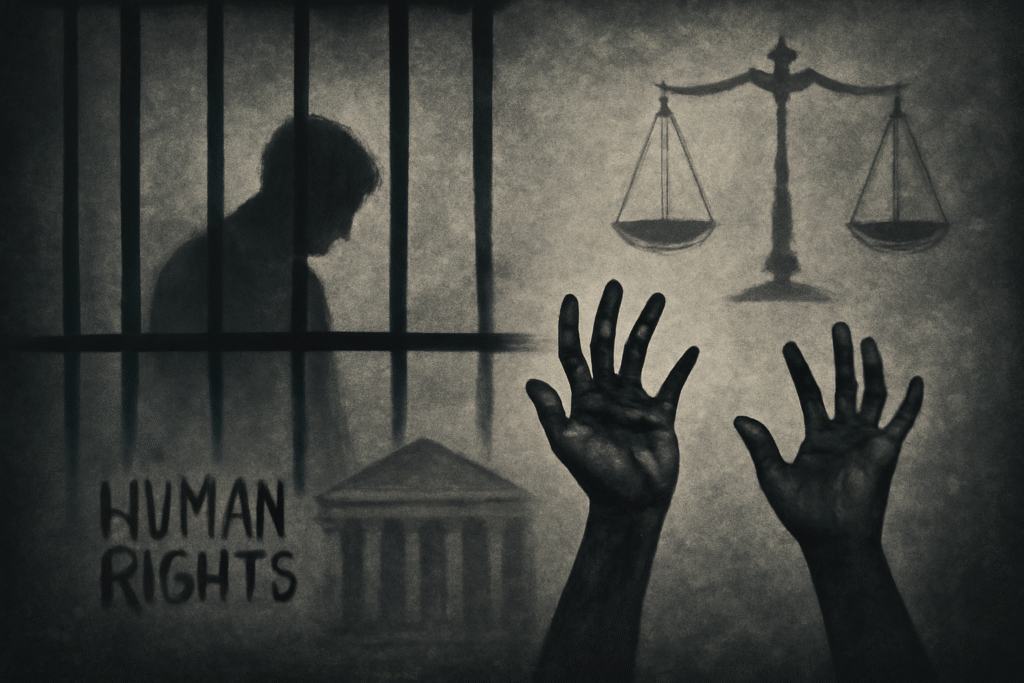Published On: October 10th 2025
Authored By: Heena Bedi
Janhit College of Law, CCSU, Meerut
Introduction
The struggle for gender equality within the realm of matrimonial and property disputes represents one of the most contested battlegrounds in Indian law. While the Constitution of India articulates unequivocal commitments to equality, liberty, and dignity under Articles 14, 15 and 21, the lived experience of women continues to be marked by systemic disadvantage. The coexistence of constitutionally guaranteed rights and diverse personal laws has created a fragmented and often inequitable legal architecture. This duality forces women to navigate a labyrinth of legal provisions, where constitutional principles are frequently subordinated to patriarchal customs.
This article critically examines women’s rights in matrimonial and property disputes in India, engaging with statutory frameworks, judicial interventions, and comparative insights. It also interrogates the extent to which reforms have addressed entrenched gender inequities and proposes structural reforms necessary to reconcile personal laws with constitutional imperatives.
Constitutional and Statutory Framework
The constitutional promise of equality is most visibly articulated in Articles 14 and 15. Article 14 enshrines the guarantee of equality before law and equal protection of laws, while Article 15 prohibits discrimination on grounds including sex. Article 21, judicially expanded to encompass the right to live with dignity, has been foundational for the recognition of women’s substantive rights. Directive Principles, particularly Article 39, direct the State to secure equal livelihood opportunities for men and women.
Statutorily, several enactments address gender equity within matrimonial and property contexts. The Hindu Succession Act 1956, as amended in 2005, was a landmark in recognising daughters as coparceners by birth. The Protection of Women from Domestic Violence Act 2005 (“PWDVA”) protects women’s right to residence and provides civil and monetary remedies against abuse. Section 125 of the Code of Criminal Procedure (“CrPC”) creates a secular right to maintenance.
Parallel personal laws fragment the regime: the Hindu Marriage Act 1955, Muslim Women (Protection of Rights on Divorce) Act 1986, Indian Divorce Act 1869, and Parsi Marriage and Divorce Act 1936 govern distinct communities. This pluralism has often entrenched gendered hierarchies rather than dismantled them.
Rights of Women in Matrimonial Disputes
Maintenance and Alimony
Maintenance is both a survival mechanism and a marker of gender justice. Section 125 CrPC creates a quick remedy across religions. The Supreme Court’s landmark ruling in Mohd Ahmed Khan v Shah Bano Begum held that divorced Muslim women were entitled to maintenance beyond the iddat period, situating maintenance within constitutional principles of equality and dignity.1 Although legislative backlash produced the Muslim Women (Protection of Rights on Divorce) Act 1986, the Court in Danial Latifi v Union of India harmonised the statute with constitutional guarantees, holding that a divorced woman must receive a “fair and reasonable provision” for her future.2
The judiciary has also progressively interpreted Section 24 of the Hindu Marriage Act and Section 37 of the Special Marriage Act to allow interim and permanent alimony. Yet, enforcement remains weak: non-payment and protracted litigation diminish the practical value of these rights.
Custody and Guardianship
Child custody jurisprudence demonstrates judicial willingness to prioritise welfare over patriarchal presumptions. Under the Hindu Minority and Guardianship Act 1956 and Guardians and Wards Act 1890, welfare of the child is paramount. Courts increasingly recognise mothers as primary caregivers, notwithstanding the father’s status as natural guardian. This progressive shift reflects global trends in child-centric custody jurisprudence.
Protection from Violence
The PWDVA 2005 was revolutionary in recognising women’s right to reside in a “shared household,” regardless of proprietary title. By straddling civil and criminal remedies—residence orders, monetary relief, protection orders—the Act situates matrimonial disputes within a broader rights discourse. Yet, its enforcement is uneven: lack of infrastructure and patriarchal resistance undermine its transformative potential.
Rights of Women in Property Disputes
Inheritance under Hindu Law
Historically, Hindu women were excluded from coparcenary property under Mitakshara law. The 2005 amendment to the Hindu Succession Act rectified this by granting daughters coparcenary rights by birth, equal to sons. The Supreme Court in Vineeta Sharma v Rakesh Sharma clarified that this right is unconditional and independent of the father’s status at the time of amendment.3 This recognition disrupts centuries of exclusion, though awareness and social acceptance remain limited.
Muslim Women’s Inheritance
Muslim law, governed by Shariat, grants women fixed shares in inheritance but at ratios generally half that of male counterparts. The Muslim Personal Law (Shariat) Application Act 1937 enforces Quranic principles, but socio-cultural practices often pressure women to relinquish their entitlements. Judicial enforcement is rare, reflecting both procedural hurdles and community resistance.
Christian and Parsi Succession
Christian and Parsi women inherit under the Indian Succession Act 1925, which adopts formal gender equality. Nevertheless, patriarchal family structures often dissuade women from asserting claims, revealing the gap between formal legal equality and substantive justice.
Stridhan
The doctrine of stridhan secures women’s absolute ownership of gifts received at marriage or later. The Supreme Court in Pratibha Rani v Suraj Kumar affirmed that stridhan cannot be appropriated by the husband or his family, and misappropriation attracts criminal liability.4 Despite this, recovery remains arduous; police reluctance and familial pressure often leave women uncompensated.
Judicial Interventions and Landmark Case Law
The Supreme Court has been pivotal in expanding gender justice:
- Shah Bano established maintenance rights beyond religious barriers.
- Danial Latifi reconciled statutory provisions with constitutional equality.
- Vineeta Sharma entrenched daughters’ coparcenary rights.
- Pratibha Rani reinforced the inviolability of stridhan.
- Shayara Bano v Union of India struck down instant triple talaq, rejecting patriarchal religious practices as unconstitutional.5
- Joseph Shine v Union of India decriminalised adultery, rejecting gender-stereotyped notions of marital fidelity.6
These cases illustrate the Court’s willingness to deploy constitutional morality to correct patriarchal inequities. Yet, inconsistency persists, with progressive judgments often followed by regressive ones reflecting judicial ambivalence.
Comparative Perspectives
A comparative lens reveals that India’s pluralistic personal law system is exceptional in its fragmentation.
- United Kingdom: The Matrimonial Causes Act 1973 mandates equitable distribution of matrimonial assets, valuing both financial and non-financial contributions.
- United States: Community property regimes treat marriage as an economic partnership, with joint ownership of marital assets.
- South Africa: Constitutional jurisprudence explicitly incorporates equality in marriage and succession, with the Constitutional Court striking down patriarchal customary laws.
India’s reluctance to recognise matrimonial property as joint ownership underscores its conservatism, leaving women economically vulnerable upon divorce.
Contemporary Challenges
Despite statutory and judicial advances, barriers remain:
- Patriarchal Resistance: Women often face social ostracism for claiming rights, particularly in inheritance disputes.
- Procedural Delays: Maintenance and property disputes languish in courts for years, undermining relief.
- Awareness Deficits: Rural and semi-urban women often remain unaware of entitlements.
- Enforcement Gaps: Maintenance orders are frequently unenforced; police rarely assist in stridhan recovery.
- Fragmented Personal Laws: Differential treatment under Hindu, Muslim, Christian, and Parsi laws perpetuates inequality, conflicting with constitutional guarantees.
Reforms and Recommendations
- Recognition of Matrimonial Property: India must codify a regime recognising marriage as an economic partnership, ensuring equitable distribution upon divorce.
- Harmonisation of Personal Laws: Either through a Uniform Civil Code or systematic reform, personal laws must align with constitutional equality.
- Strengthening Enforcement: Mechanisms to secure prompt execution of maintenance and property orders must be institutionalised.
- Awareness and Legal Aid: Nationwide campaigns and robust legal aid can bridge the knowledge gap, particularly in rural areas.
- Judicial Sensitivity Training: Judges must undergo training in gender sensitivity to prevent perpetuation of patriarchal biases in adjudication.
Conclusion
The rights of women in matrimonial and property disputes represent an unfinished constitutional project. Statutory reform and judicial creativity have undoubtedly advanced gender justice, yet entrenched patriarchal structures and fragmented personal laws continue to obstruct substantive equality. Recognising matrimonial property as joint ownership, harmonising personal laws, and enforcing rights with vigour are critical to realising the constitutional promise of equality. For India to evolve into a truly gender-just society, women must be acknowledged not as dependents within familial structures but as equal stakeholders in matrimonial and property relations.
References
1 Mohd Ahmed Khan v Shah Bano Begum (1985) 2 SCC 556.
2 Danial Latifi v Union of India (2001) 7 SCC 740.
3 Vineeta Sharma v Rakesh Sharma (2020) 9 SCC 1.
4 Pratibha Rani v Suraj Kumar (1985) 2 SCC 370.
5 Shayara Bano v Union of India (2017) 9 SCC 1.
6 Joseph Shine v Union of India (2019) 3 SCC 39.
Bibliography
- Constitution of India.
- Code of Criminal Procedure 1973.
- Hindu Marriage Act 1955.
- Hindu Succession Act 1956 (as amended 2005).
- Muslim Women (Protection of Rights on Divorce) Act 1986.
- Protection of Women from Domestic Violence Act 2005.
- Indian Divorce Act 1869.
- Indian Succession Act 1925.
- Parsi Marriage and Divorce Act 1936.
- Mohd Ahmed Khan v Shah Bano Begum (1985) 2 SCC 556.
- Danial Latifi v Union of India (2001) 7 SCC 740.
- Vineeta Sharma v Rakesh Sharma (2020) 9 SCC 1.
- Pratibha Rani v Suraj Kumar (1985) 2 SCC 370.
- Shayara Bano v Union of India (2017) 9 SCC 1.
- Joseph Shine v Union of India (2019) 3 SCC 39.
- Matrimonial Causes Act 1973 (UK).
- Community Property Statutes (US States).
- South African Constitutional Court jurisprudence on customary law.




